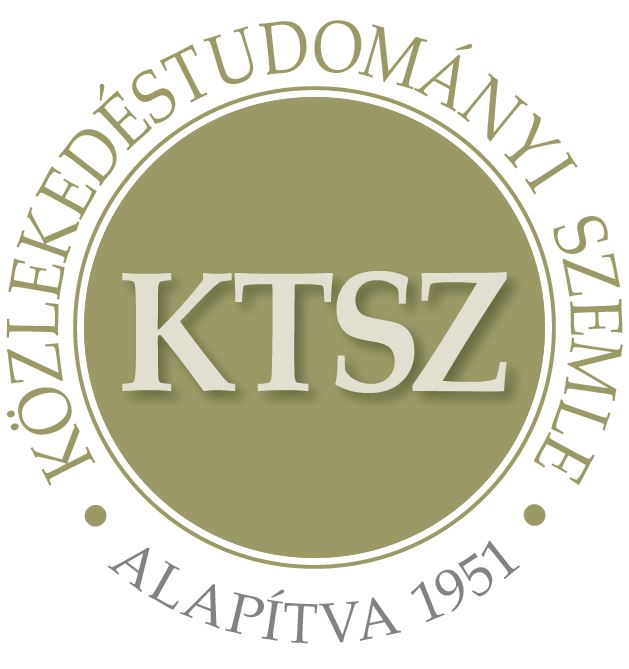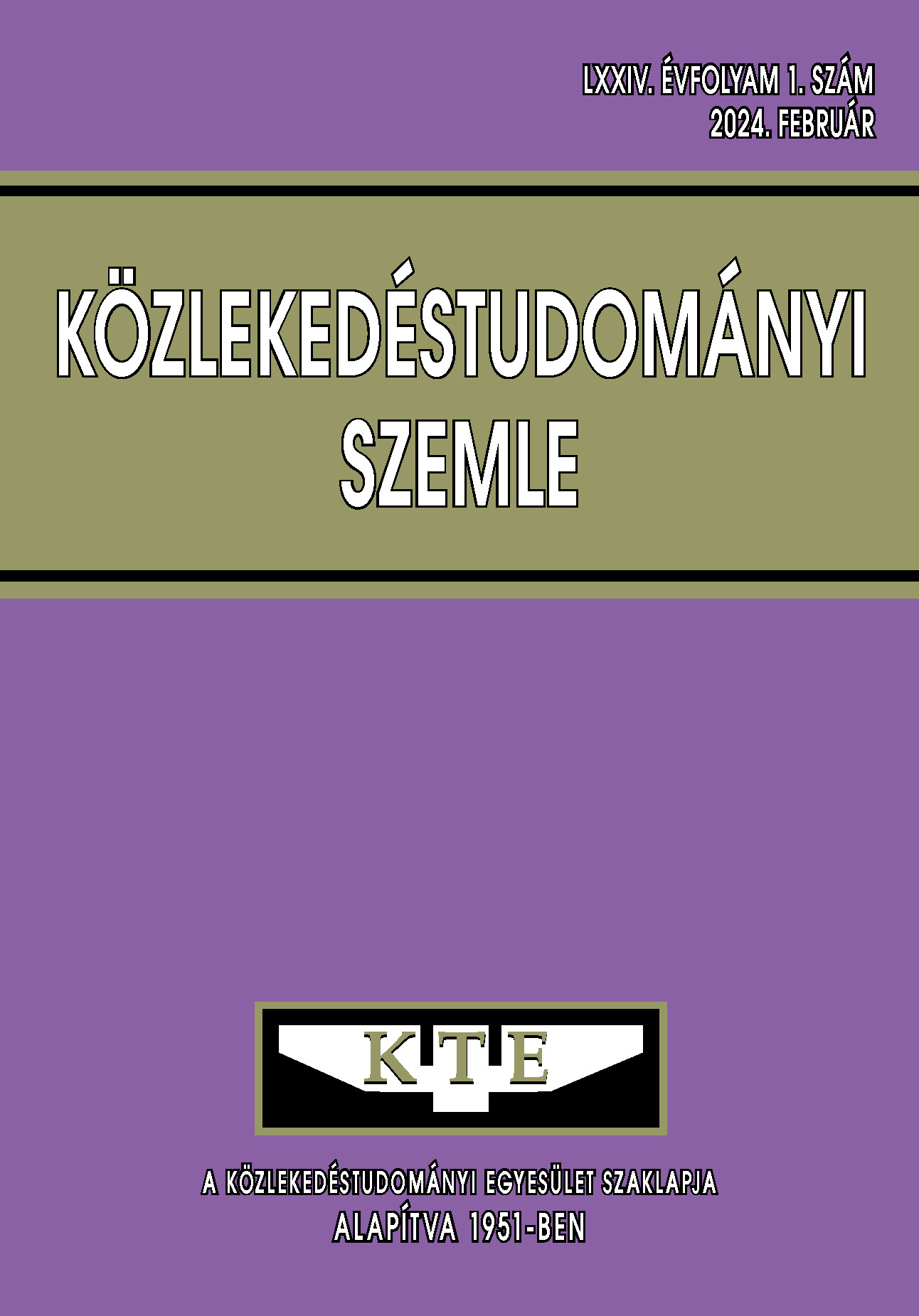The dilemma: to paint or not to paint on the circuit? Traffic safety experiences of the concentric two-lane roundabout on Szombathely main roads 86-87
Abstract
In Hungary, the first new types of suburban roundabouts - initially single-lane - were built in the early 1990s, but by the turn of the millennium, some concentric two-lane roundabouts had already appeared in Hungary. Due to unfavourable national and international experiences, most of the concentric roundabouts were later converted into spiral or turbo roundabouts, but there are still some that have not been converted due to lack of resources. The north-eastern gate of Szombathely is a seven-lane roundabout with a two-lane geometry. The (parallel) traffic on the roundabout is still a controversial issue among road users. In this article, we describe the changes in the traffic load of the junction, examine the conflicts at the junction and suggest a possible modification of the roundabout.
References
Hóz Erzsébet – dr. Lányi Péter: Körforgalom a biztonság eszköze, Autósélet 2003. január
KTE konferencia kiadvány, „Körforgalom a hazai gyakorlatban, 1997” Konferencia, Bük-fürdő, 1997. április 9-11.
https://utugyilapok.hu/cikkek/uj-tipusuturbo-korforgalmak-alkalmazasanakhazai-tapasztalatai/ (2023. 07. 10.)
https://www.youtube.com/watch?v=jJ8my-TlLvE (2023. 07. 10.)
https://webbal.kozut.hu/ (2023. 07. 04.)
https://112press.hu/hirek/reszletek/koccanasok_zanati_uti_korforgalom_szhely/ (2023. 07. 10.)
Articles published electronically are open access (OJS), freely available online and can be downloaded. Authors of articles are not charged any publication or publishing costs (APC). Users have the right to read, download, copy, print, and search the articles, or share the full text with a link.
Authors must declare that their submission has not been previously published in another journal, that financial support has been acknowledged, and that the list of references is complete and accurate, including specification of URLs and DOIs (if available). When submitting a draft article, each author approves the submitted version. Authors guarantee that the article is their original work. Authors are required to participate in the peer review process, follow the advice of reviewers, meet the prescribed deadlines, and, if any, withdraw the submission or correct errors.
All submitted articles are subject to peer review, where the editors request an independent evaluation from at least one expert, ensuring that the reviewer(s) have no conflicts of interest with the authors. The final decision is made by the Editor-in-Chief, who takes into account the evaluations and the suggestions of the editors. The editors and reviewers treat the submission confidentially.
The publisher and editors are committed to maintaining high ethical standards and to preventing publications that involve research misconduct. They follow the COPE guidelines on such ethical issues.
The authors retain copyright and grant the journal the right of first publication under the Creative Commons License (https://creativecommons.org/licenses/by-nc-nd/4.0), which allows others to share the work, while acknowledging the authorship of the work and the first publication in the journal.
The journal archives all published articles, and the journal's owner, the Hungarian Society of Transportation Sciences, will continue to operate the database even if the journal ceases to be published.















